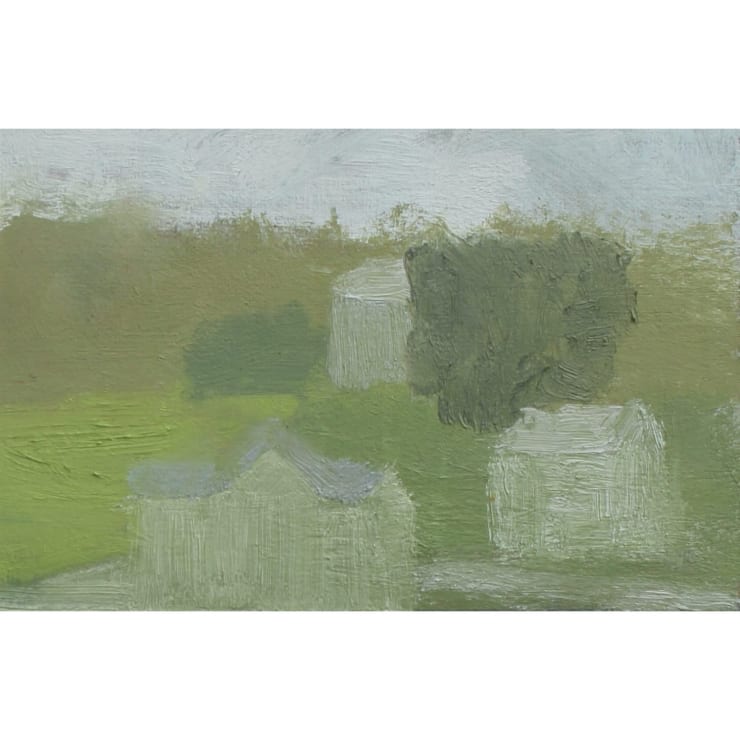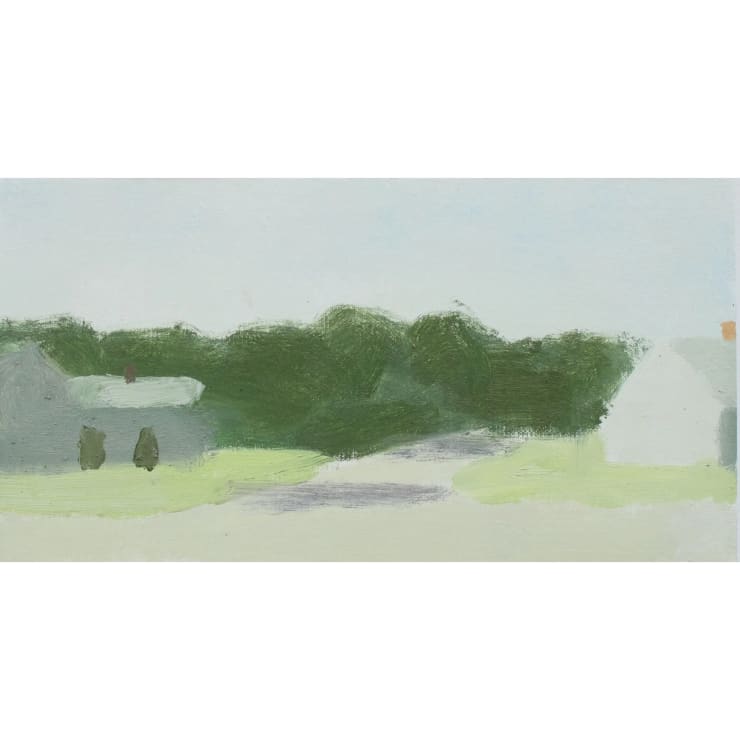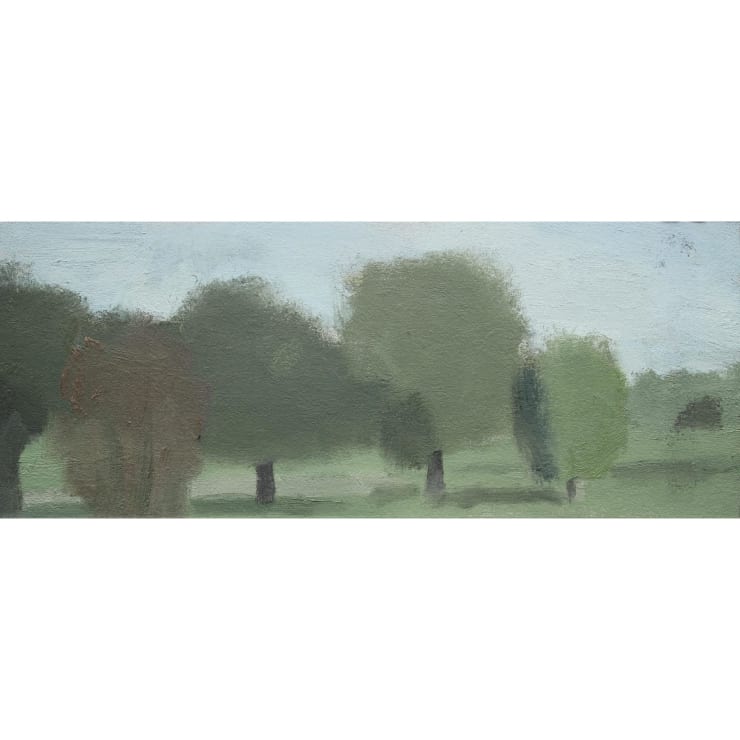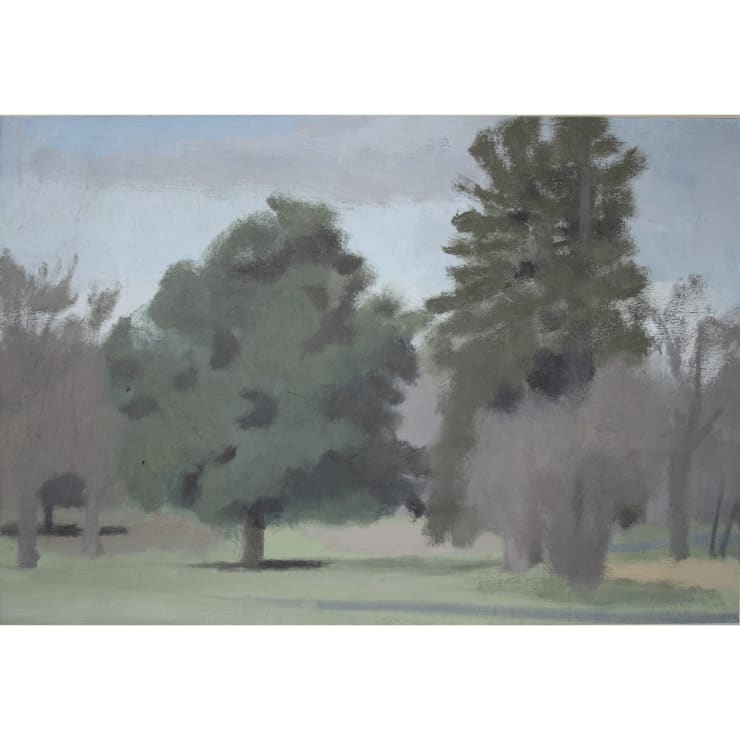OTOMYS: How did you come to your style of constructing an abstract experience within a representational field?
Laura Vahlberg: As a young person my after school art teacher, Sarah Rutherfoord, had her students make non-representational composition exercises every day at the beginning of class. One day one of her students burst in to class saying excitedly: "It's all shapes! It's all just shapes!" I took her revelation to heart as I began to realize that I could make representational pictures of the world around me by arranging and rearranging simple shapes.
This idea of arranging shapes was pushed further when I met my mentor Elana Hagler. She told me about Charles Hawthorne's color spot theory in the book "Hawthorne on Painting." The theory goes that if an artist begins a painting with 3-5 spots of color that are in correct (parallel to nature) relationship to each other in shape, value, and temperature, then an artist can acheive a convincing feeling of reality. A painting can then be built on the foundation of those 3-5 spots of refined color.
So my current work is a putting together of the two ideas: that a representational painting can be an arrangement of simple shapes, and that those shapes can be refined color spots. I'm still interested in making paintings that both feel real and are satisfying abstract compositions.
OTOMYS: Could you talk a little bit more about your concept of ‘air quality’ and how it influences the direction of a work?
Laura Vahlberg: I like to think about how a picture can be unified-- that everything inside a picture could belong to one world. When I'm painting I'll ask the question: "what do all of the parts of a motif have in common?" I find that the air is the common denominator that ties all the color spots in a painting together. So I factor that air color into how I mix paint colors.
I can sometimes spend a fair amount of time mixing colors on my pallete with a palette knife. I often start mixing with a neutral gray that I had mixed up from a previous session- a gray that includes all of the tube colors on my palette. Then I start to differentiate that color by asking the motif questions like- lighter? darker? warmer? cooler? more red? more violet? etc.-- until the color becomes a sort of nameless color that feels like the nature that I see with my eyes. I also check to see that the resulting color sits comfortably with the other colors already in the picture.
Once I find the overall air color of the painting, then I can start to understand its mood. That mood will ultimately lead to a sort of narrative. Narrative is almost never my primary goal, but it does sometimes happen when a picture starts to feel like a place.
OTOMYS: Your method of using masking tape to frame your canvas to keep the dimension of the work flexible is fascinating. How do you know when a painting needs to be expanded?
Laura Vahlberg: I know I want to paint a motif when I see a set of shapes in nature that excite me and I can visualize it in a rectangle. However, I don't always know exactly what part of the motif captures my attention until I start making a picture of it. Making the painting can feel like an exercise in finding out what is attractive to me. Sometimes, for example, I think a painting is about a particular tree and then I find out I'm actually interested in the mountains in the distance. The main idea of a painting can shift and so often I want to change the picture's dimensions with that shift.
Sometimes I use tape to move an edge of a painting just an eighth of an inch inwards, and then the placement feels right. Sometimes the painting seems to want to be doubled in size. It's an intuitive process.
OTOMYS: Intuition and feeling play a significant part in your process of creating works. However, you also do a lot of teaching in which you, presumably, have to be a lot more specific and thorough when describing the theory and rationale behind your process. Do you find having both these modes useful for understanding your art?
Laura Vahlberg: I don't know if I'm trying to understand my art. But yes, describing the theory and rationale behind my process is an enriching part of my art practice. While teaching I do talk a bit about the dance between intuition and theory. I teach that paying attention (to oneself and what one is looking at) is the most important part of art practice. Theories, to me, are like a bag of tricks that can be either useful or disposable- and we do discuss them a fair amount during class Q&A.




